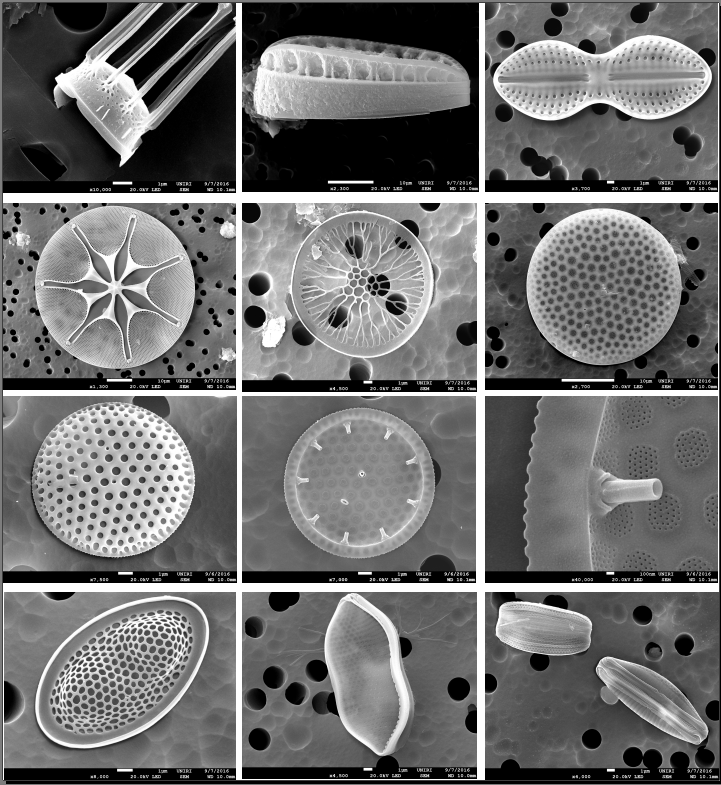Research - Laboratory for Scanning Electron Microscopy
The main research topics include:
-
Reasearch of morphology and thickness of different semiconducting or isolating films obtained by Atomic Layer Deposition technique
Titanium dioxide is one of the most promising materials for semiconductor photo-catalytic coatings for air and water purification systems or biocompatible coatings of biomedical material due to its high photo-catalytic activity and chemical stablity, biocompatibility and low toxicity. We investigated the possibility to control the TiO2 grain size by growing TiO2 films on different substrates.The crystallinity and the TiO2 grain size depends on the deposition temperature, number of ALD cycles - thickness of TiO2 films, type of substrate and the thickness of the Al2O3 intermediate layer.

Thin layers of Al2O3 films on the cellulose surface can prevent oxygen diffusion and spontaneous inflammation of cellulose at higher temperatures. For this purpose, we have studied the properties of protective thin Al2O3 layers on the cellulose surface fabricated by Atomic Layer Deposition. The homogeneity of the Al2O3 layer and its thickness have been determined by a Scanning Electron Microscope working in a transmission mode (STEM).

-
Investigation of fresh water and marine diatoms, a group of microalgae (lat. Bacillariophyceae, Diatomeae)
A unique feature of diatom cells is that they are enclosed within a cell wall made of silica called frustula. These frustules show a wide diversity in form, but are usually almost bilaterally symmetrical. More than 250 genera of living diatoms are known, with an estimated 100 000 extant species. The diatoms differ by them dimensions, the frustula shape and the number and distribution of details (valve/strieae) on the surface. With the Scanning Electron Microscope we have investigated diatoms from fresh water and from the Adriatic sea.

-
Investigation of zeolites
Zeolites are microporous, aluminosilicate minerals commonly used as commercial adsorbents and ctalyst. Zeolite attracts attention due to its unique properties such as large surface area, defined channel system and controlled density of active sites. Using the Scanning Electron Microscope, we have investigated artificial zeolites and zeolites incorporated in polymeric materials.



















